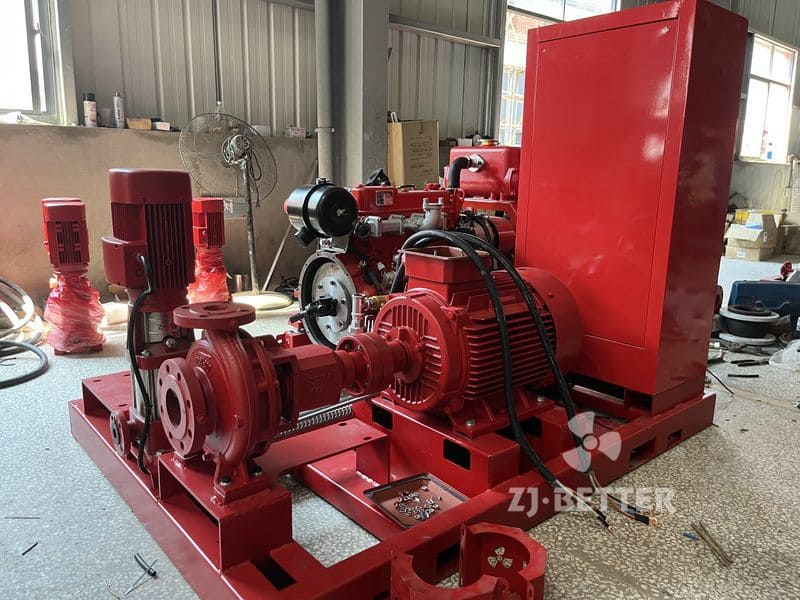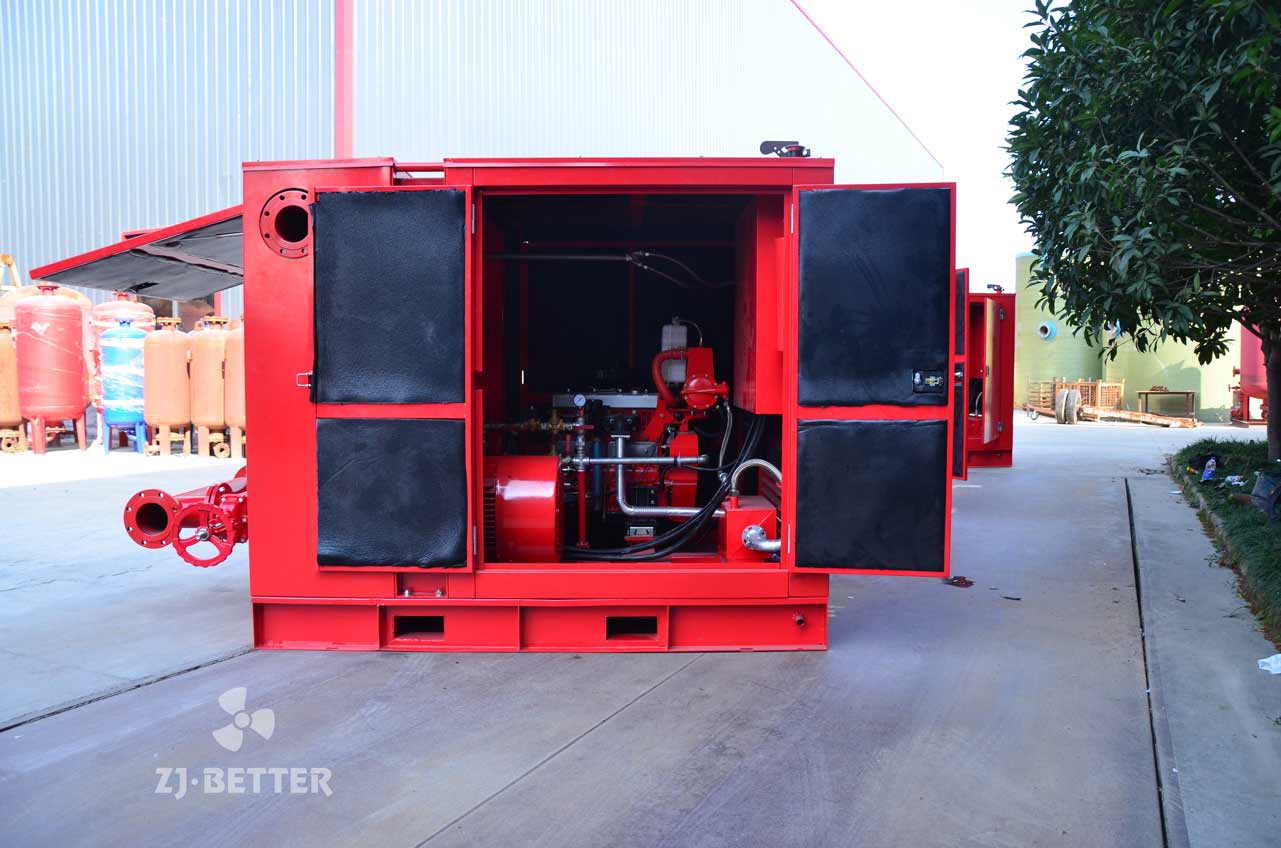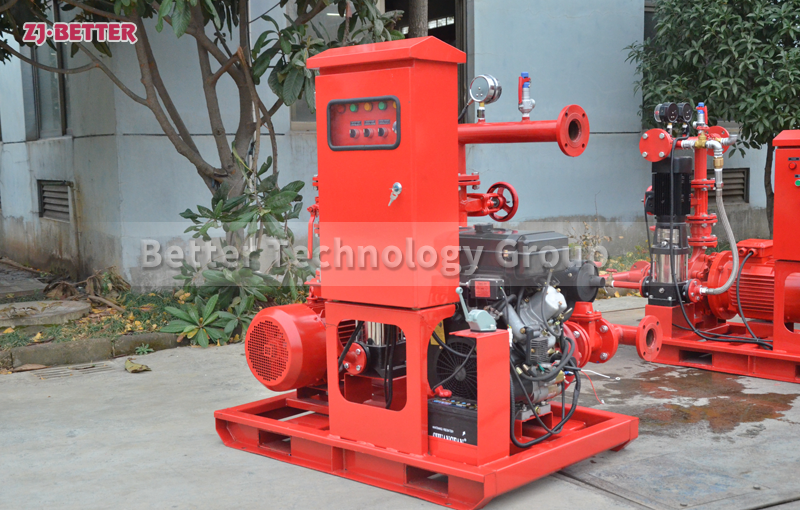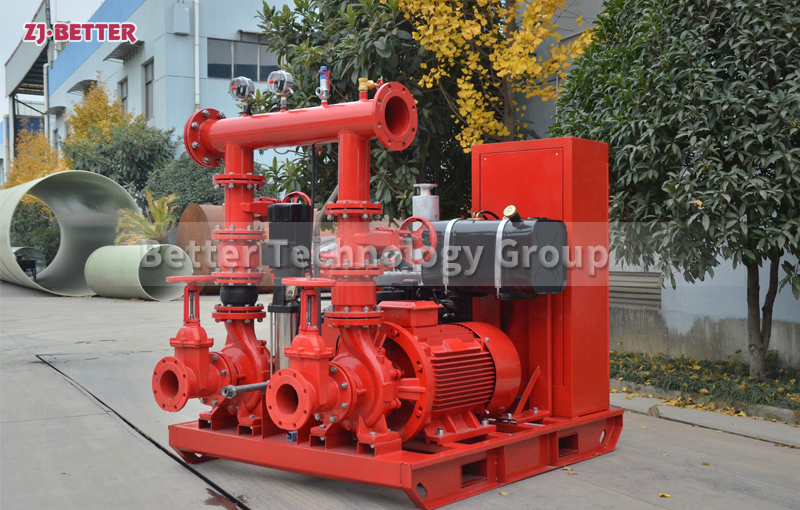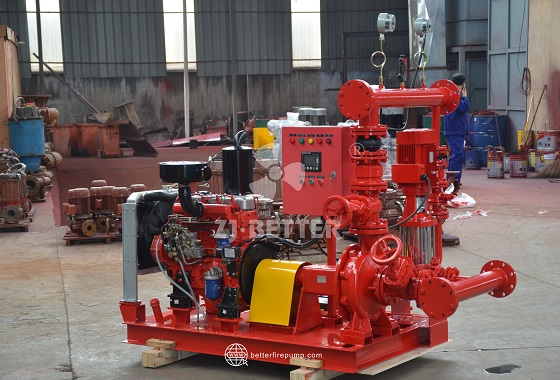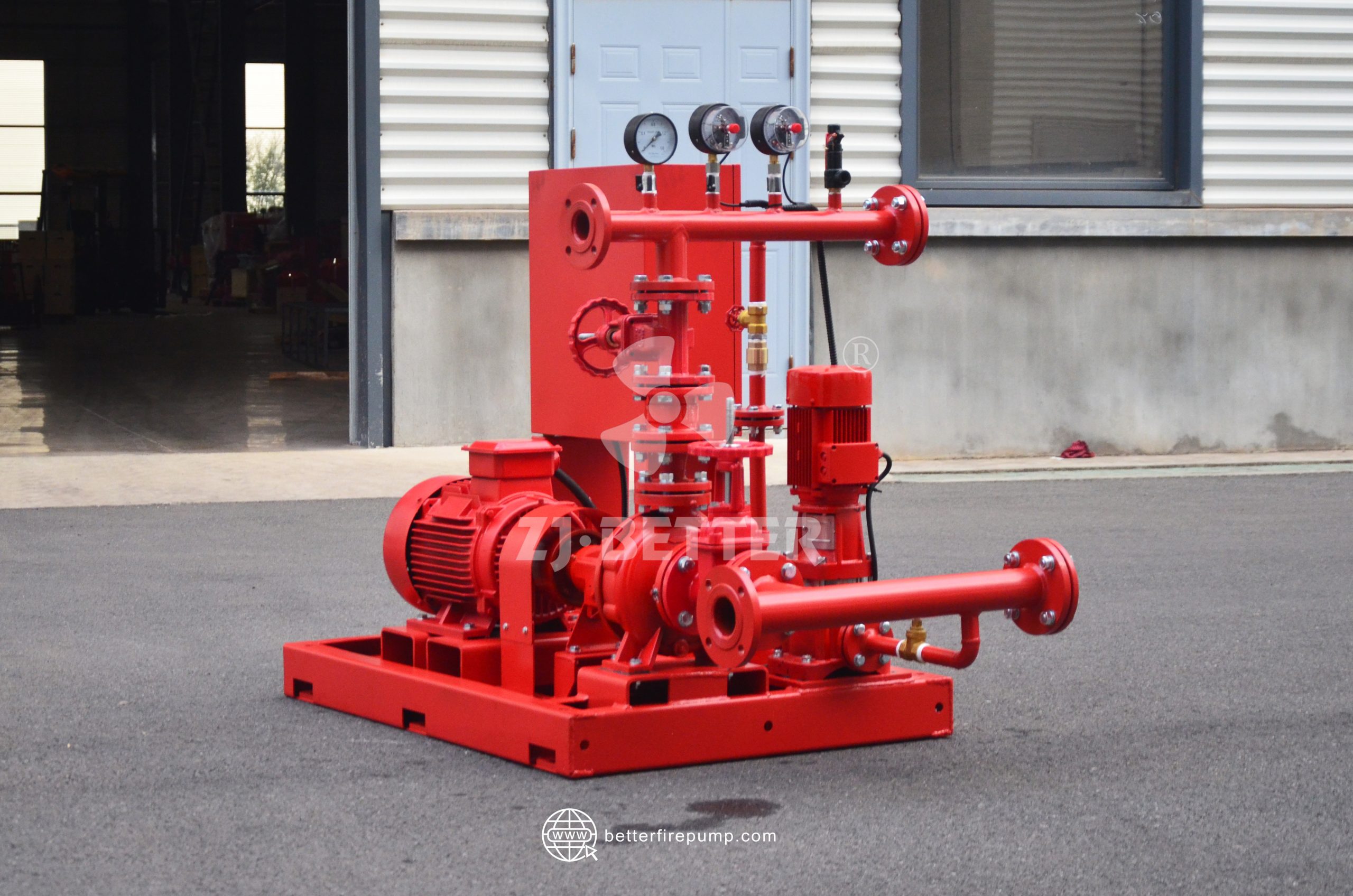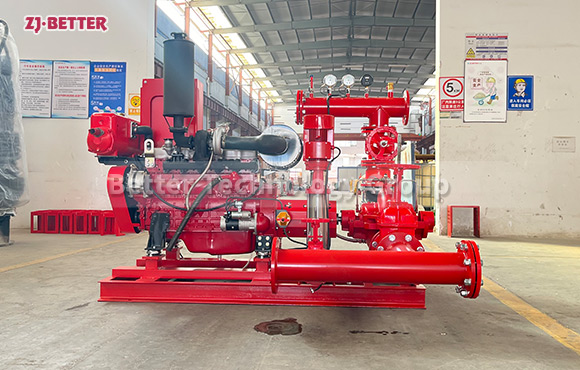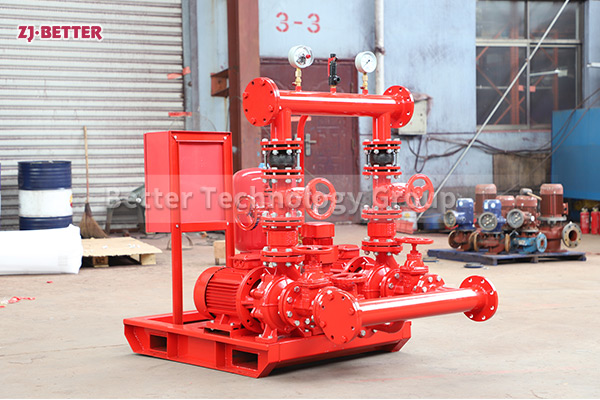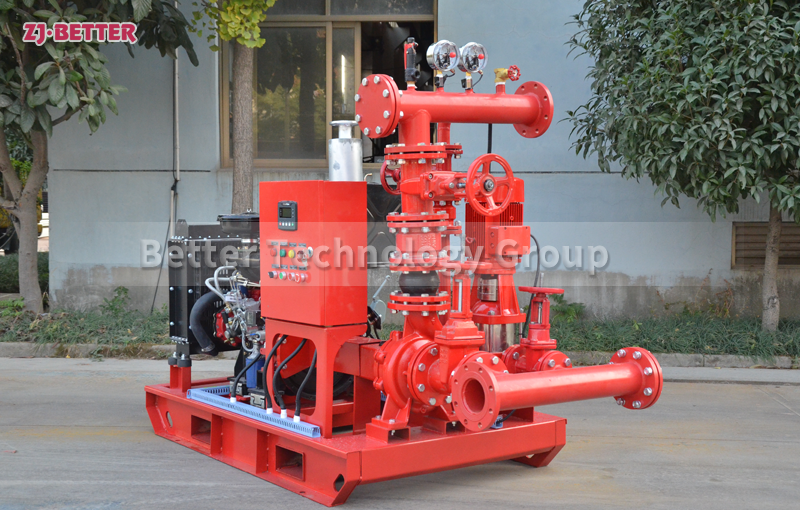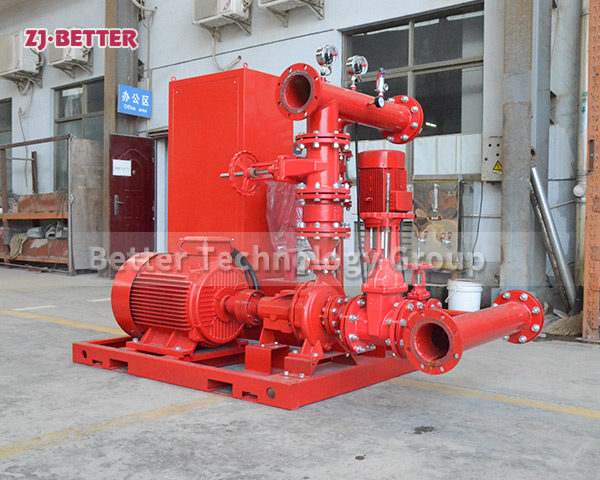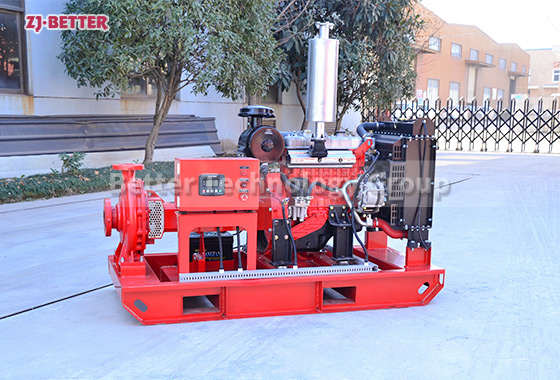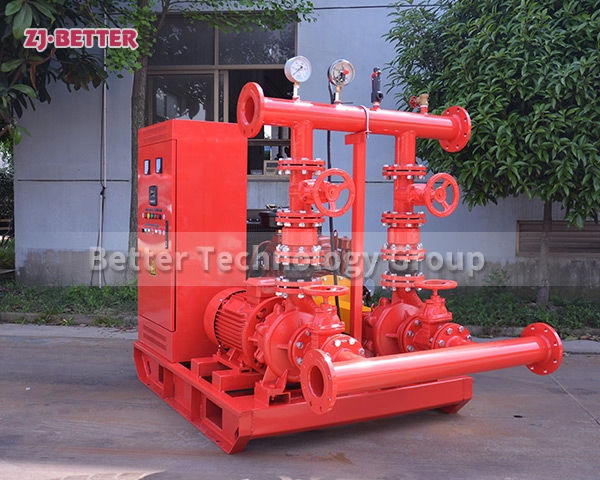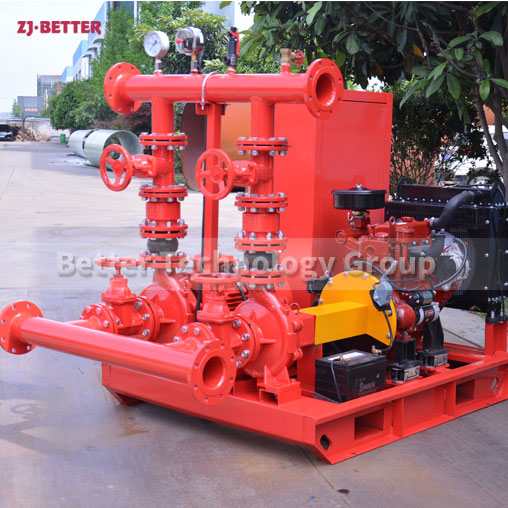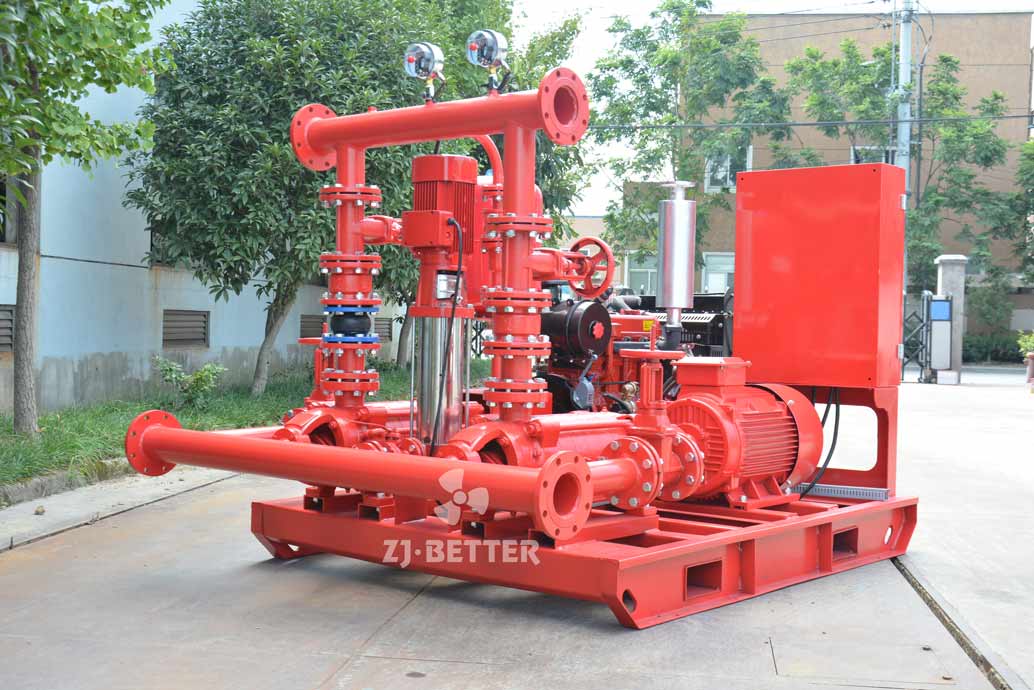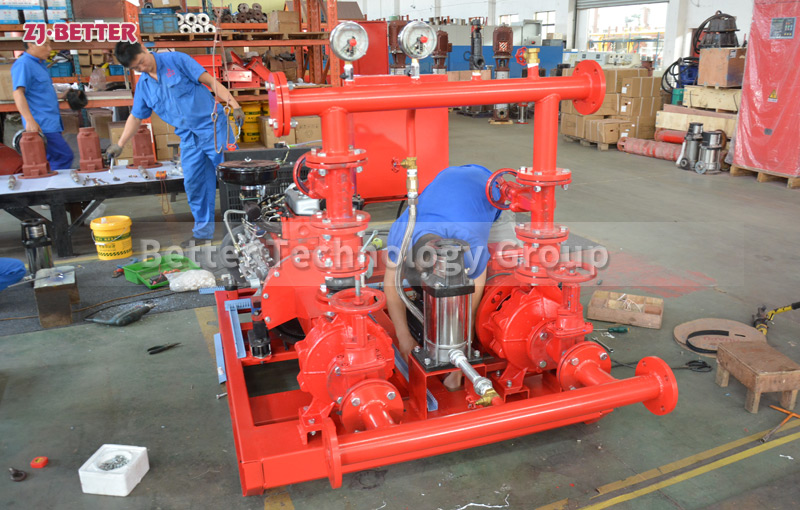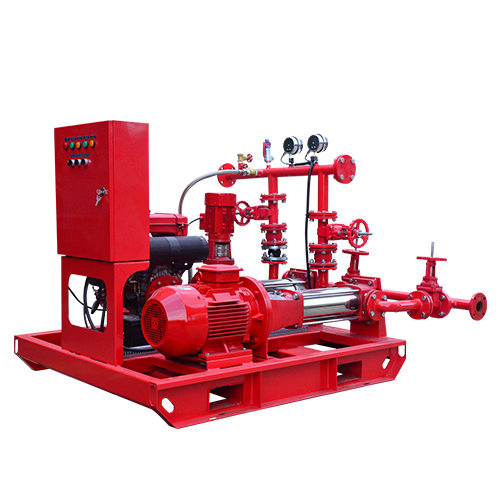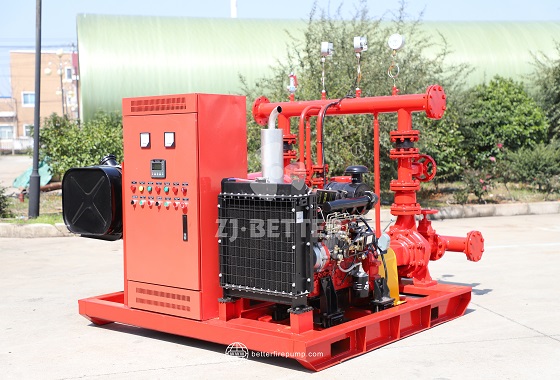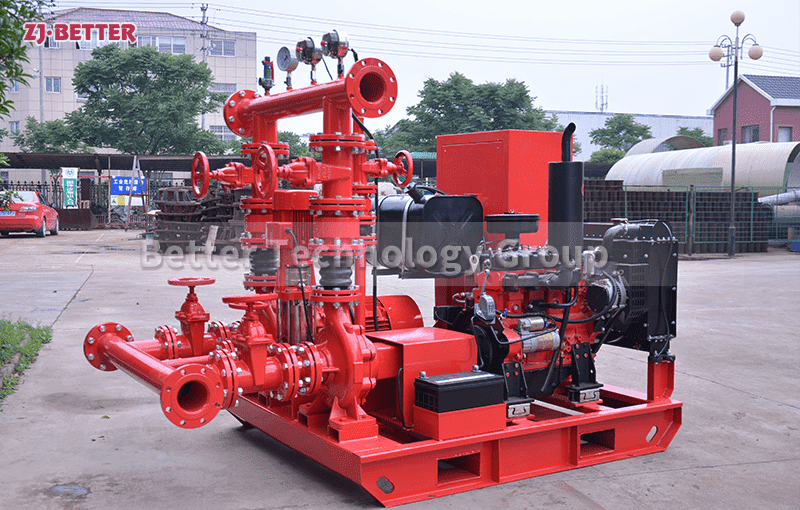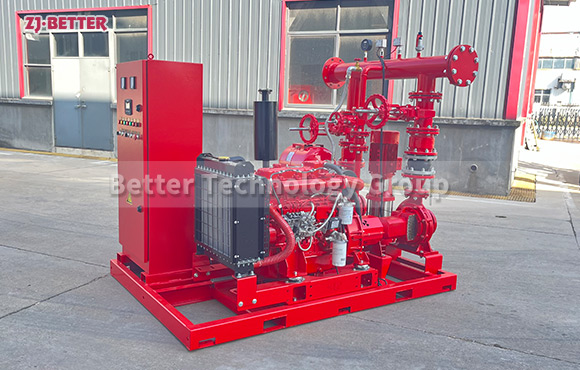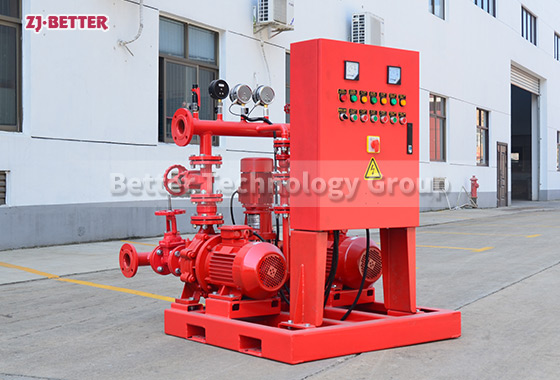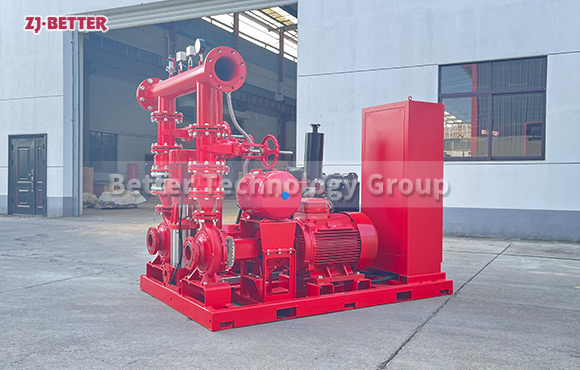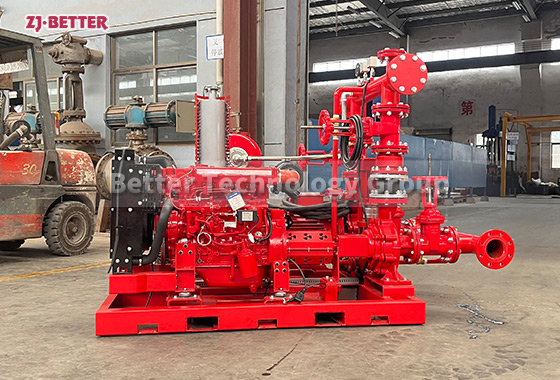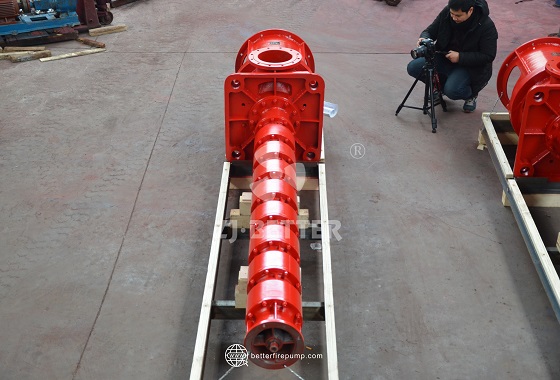750gpm EDJ pump set
This is a set of EDJ fire pump set, which consists of electric pump + diesel pump + jockey pump. The three pumps are automatically started and stopped. When the joceky pump detects that the electric pump cannot operate normally, the diesel engine pump will start automatically. Can also be used, the fire pump set is widely used in various emergency firefighting occasions.
EDJ fire pump group consists of main electric pump, backup diesel pump and jockey pump. The pump is assembled from discharge and suction pipes and a control panel. The fire pump system can be customized for different uses such as high-rise buildings, warehouses, facilities, hospitals, supermarkets, shopping malls, villas, apartments, etc.
Our factory has more than 20 years of industry experience. For domestic customers, we have ISO, CCCF and other certificates, and for foreign customers, we also have UL certificates. We have a professional R&D team and sales team, which are deeply loved by domestic and foreign customers.



